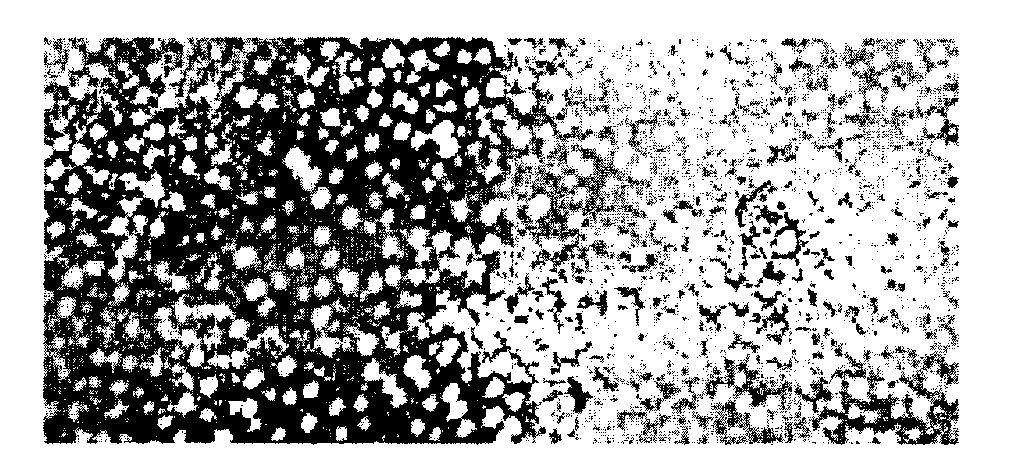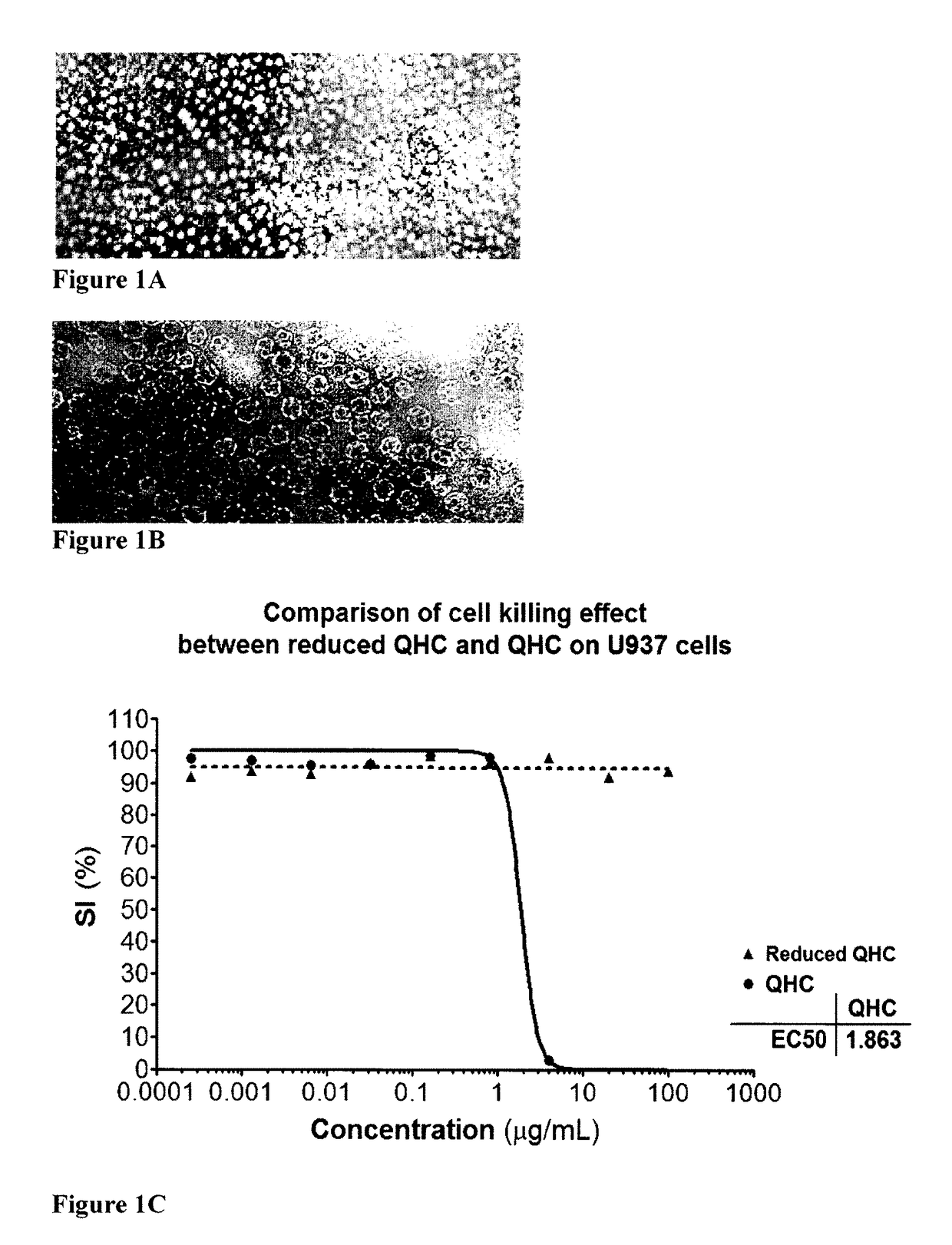Nanoparticles, composed of sterol and saponin from Quillaja saponaria Molina for use in pharmaceutical compositions
a technology of sterol and saponin, which is applied in the field of nanoparticles, can solve the problems of complex procedure, inability to integrate other hydrophobic or amphipathic molecules, and loss of material during the production process, and achieves the effect of no loss and easy production process
- Summary
- Abstract
- Description
- Claims
- Application Information
AI Technical Summary
Benefits of technology
Problems solved by technology
Method used
Image
Examples
example 1
Experiment 1A
Formation of G3 Particles
[0235]The basic structure of the G3 particle is a two component structure. The formulation i.e. the production of the particle is based on a step wise procedure. In the first step all hydrophobic and amphipathic components are assembled to be included in the final G3 particle. The second step encompasses extraction of the lipophilic components in the lipid membrane to be incorporated into the water soluble quillaja particle (suspension) i.e. an innovative manner and new concept for formulation of a colloidal particle, the G3 particle. The crucial event is a binding in the water phase between the aldehyde group (HO) on the triterpen of quillaja molecule is destroyed no binding occurs determined by failure of G3 formation and also on the effect to kill cancer cells or stimulate cells to produce cytokines in this case measured by IL-8 production (see example QQ).
[0236]In this example, the formulation of the G3 nanoparticles is described. In experim...
experiment 1b
Materials
[0252]The methanol (LiChrosolvl) was obtained from Sigma-Aldrich (Seelze, Germany). The water was produced in-house in a Milli-Q system (Millipore Corp., Molsheim, France). Isolute™ 1-g C18 (EC) solid-phase extraction (SPE) columns were purchased from International Sorbent Technology, Ltd., UK.
[0253]In example 1 experiment A It is shown that quillaja micelles in the water phase interact with cholesterol in the artificial membrane created in experiment A. The only polar group on cholesterol is a hydroxyl group that can react with the quillaja molecule in a water solution. This experiment explores whether the aldehyde is involved in particle formation and the biological activities cancer cell killing and IL8 production. The aldehyde group in position C-23 on the triterpen skeleton of the quillaja molecule was destroyed by reduction and analysed. The read out was the particle formulation i.e. the extraction of the membrane into the quillaja micelle, the anticancer cell killing...
example 2
[0258]This example shows that a molecule with amphipathic properties can be incorporated into the G3 particles according to the technology described in Example 1. To note DT is naturally soluble in water as a micelle being disintegrated after administration due to dilution to below CMC at the site of injection and subsequently after the transportation from the site. It has, therefore, poor bioavailability. Consequently a stable complex in G3 is important.
Experimental Set-Up
[0259]The experiment set-up is essentially the same as for Example 1, apart from that an amphipathic molecule diterpenoid (DT) was also solubilized at the same time with cholesterol in chloroform and the artificial membrane was formed with DT as described for Example 1. The DT molecule together cholesterol was extracted and integrated with Quil A fraction C (QHC) to forming the G3 particle in step 2 as described in example 1 i.e. 1 μl DT (100 μg / ml in 99% ethanol as the stock solution) was solubilized in chlorofor...
PUM
| Property | Measurement | Unit |
|---|---|---|
| particle diameter | aaaaa | aaaaa |
| particle diameter | aaaaa | aaaaa |
| diameter | aaaaa | aaaaa |
Abstract
Description
Claims
Application Information
 Login to View More
Login to View More - R&D
- Intellectual Property
- Life Sciences
- Materials
- Tech Scout
- Unparalleled Data Quality
- Higher Quality Content
- 60% Fewer Hallucinations
Browse by: Latest US Patents, China's latest patents, Technical Efficacy Thesaurus, Application Domain, Technology Topic, Popular Technical Reports.
© 2025 PatSnap. All rights reserved.Legal|Privacy policy|Modern Slavery Act Transparency Statement|Sitemap|About US| Contact US: help@patsnap.com



